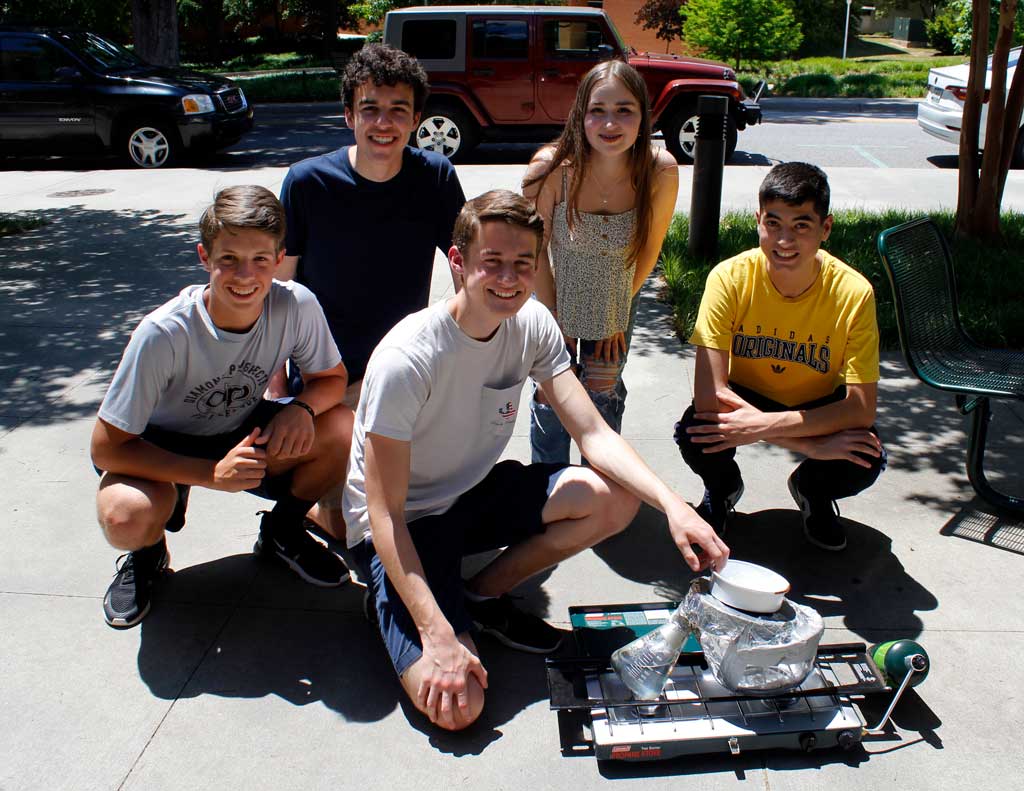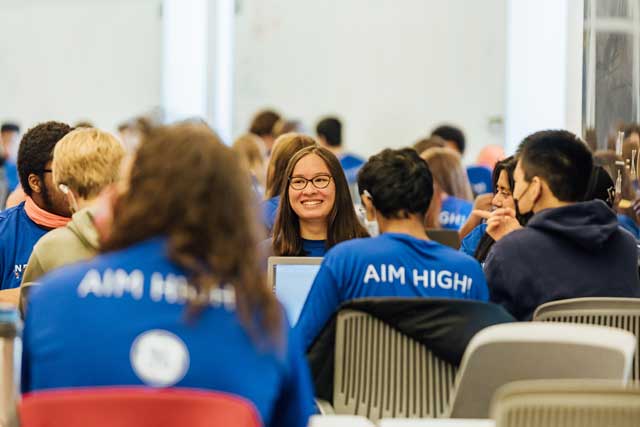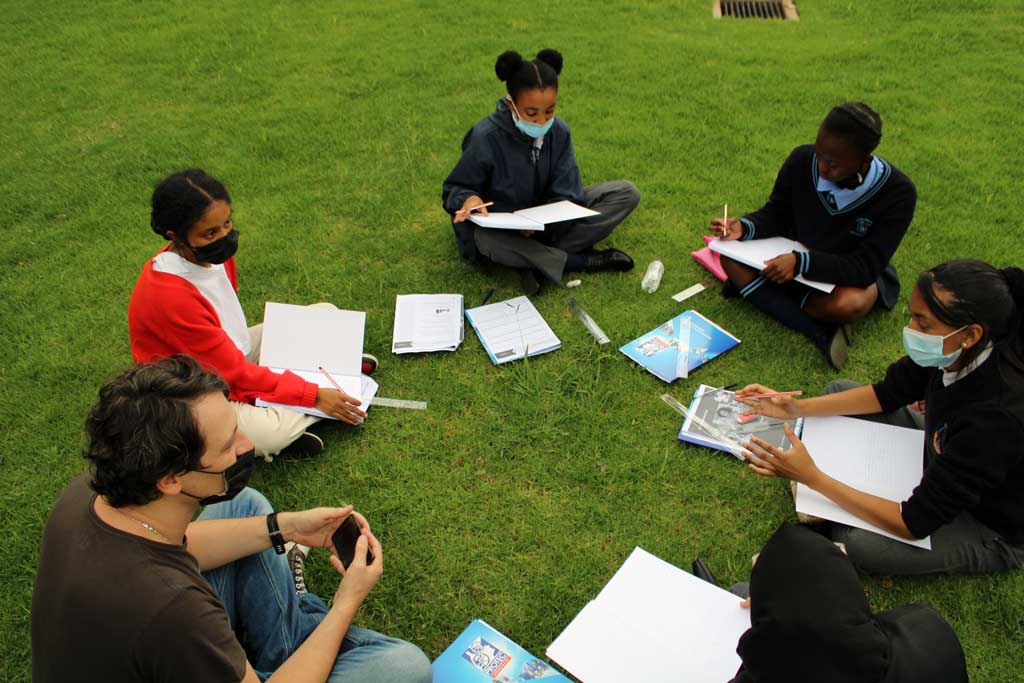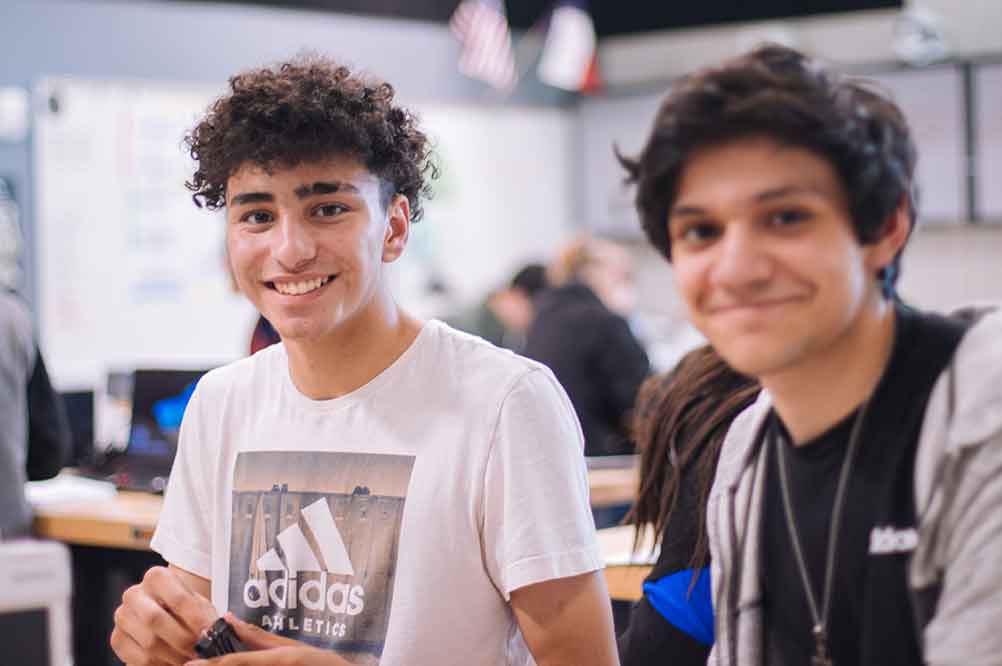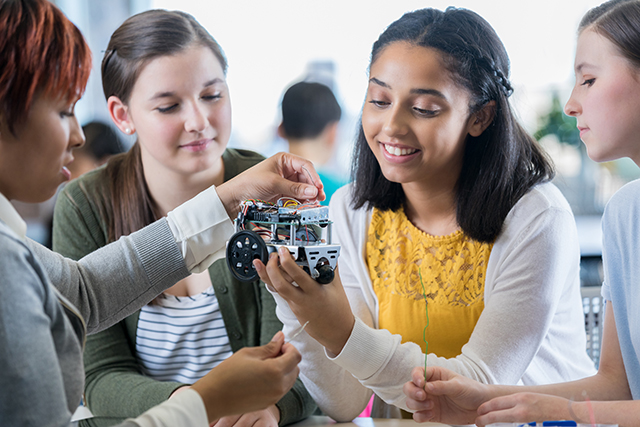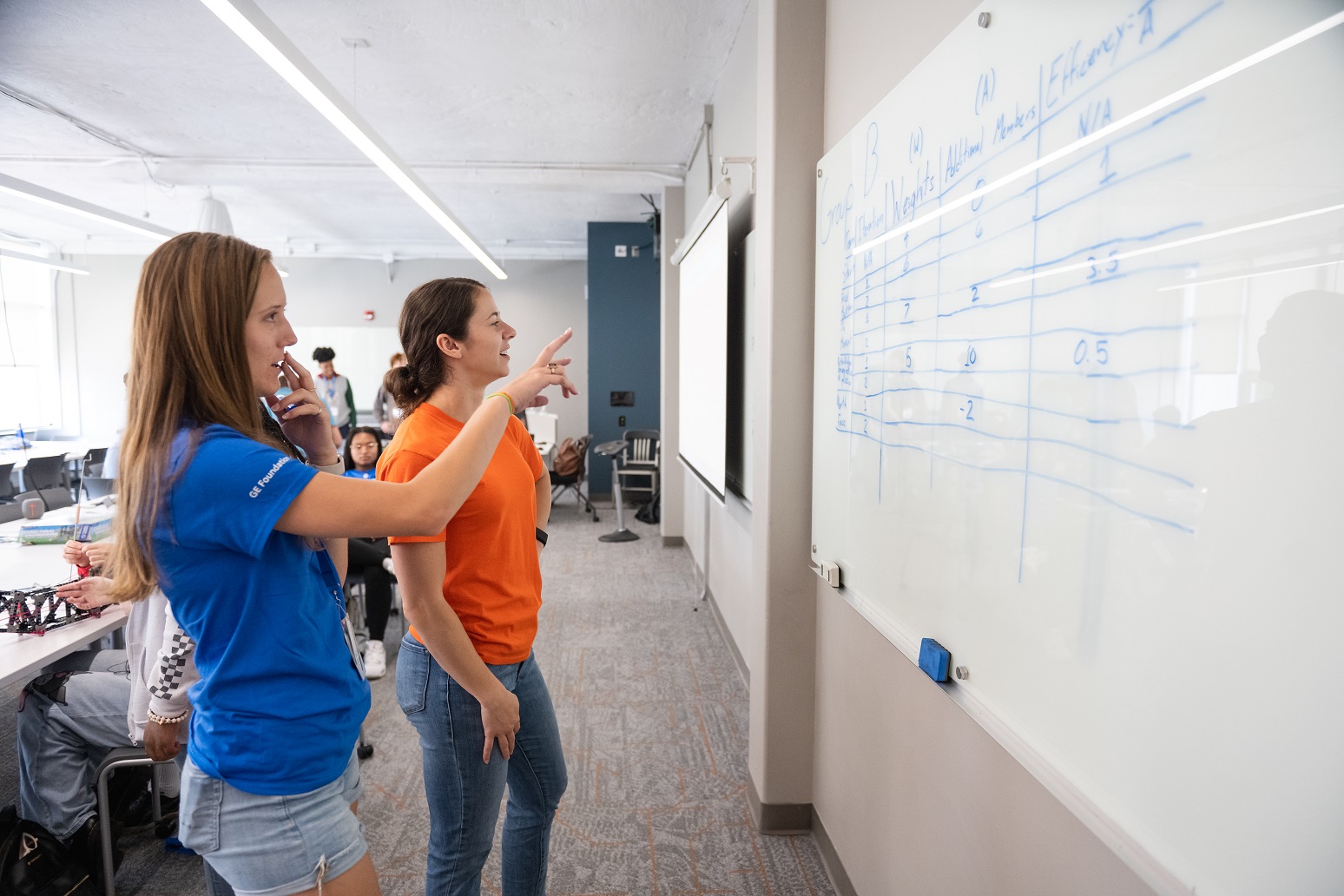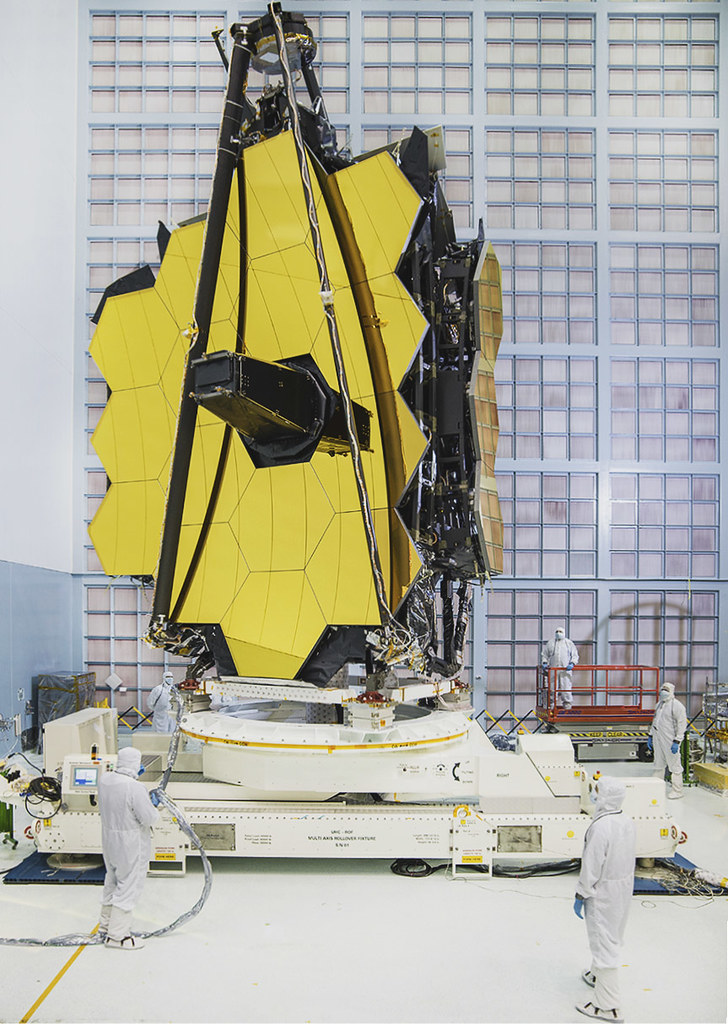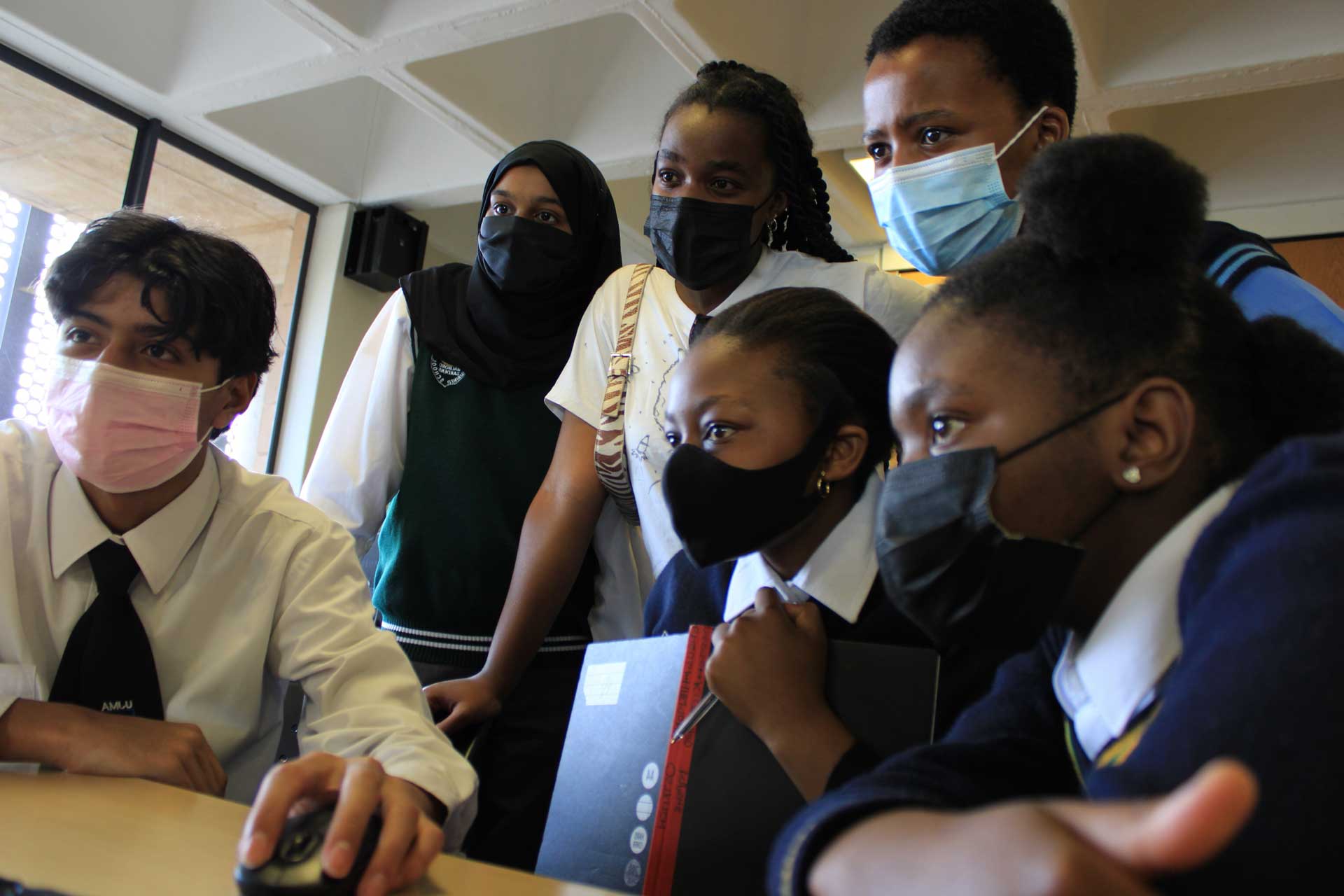

To capture the tiny amount of light emitted from the most distant parts of the universe, the James Webb Space Telescope needs a big mirror. Its mirror is 6.5 m (24 ft) high, about as high as a two-story building.
No mirror that large has even been made. With current technology, it would be impossible to properly shape and polish a mirror that large. Not only that, how do you get a 6.5 m mirror to fit into a rocket only 4.5 m wide?
The answer lies in making the primary mirror out of 18 separate hexagonal mirrors. Altogether, they create a mirror large enough to capture the needed light. Even better: the three hexagons on either side can fold back, making the mirror narrow enough to fit inside the rocket.
Hexagons are one of the most efficient shapes to tessellate (to arrange in a repeated pattern without any gaps) because they have the greatest area for the smallest perimeter. For bees, that means more honey can be stored while using the least wax. For the James Webb Space Telescope, that means more mirror with less edge to be damaged.
Want to know more about why hexagons are so amazing? Watch Hexagons are the Bestagons (9:26)
In the image above, you can see one of the "wings" folded back. Each wing holds three mirror segments. When Webb launched, both wings were folded in this way, which allowed the mirror to fit into the rocket.
But why were hexagons chosen, besides of course that they are the best shape ever? They were chosen because, together, hexagons can make a mirror that is almost circular (the best shape for collecting and focusing light) without leaving any gaps between the pieces. If the segments were circular, there would be gaps between them, which would be a waste of potential reflecting surface.
Here is a tessellation of regular hexagons.
Can you explain why regular hexagons tessellate?
Using hexagons also means that the whole primary mirror is perfectly symmetrical, which makes focusing the light much simpler.
The exact orientation and shape of each mirror segment can be precisely controlled by seven motors. And by ‘precisely,’ we mean movements less than a 1/10,000th the width of a human hair.
This video explains how the Webb will focus its primary mirror to capture clear shape images:
Build your own tessellation out of regular polygons using The Tesselator.
You can watch this video if you need help using the tool.
You can also draw your own tessellation on a piece of paper and hang it up on your bedroom wall!

